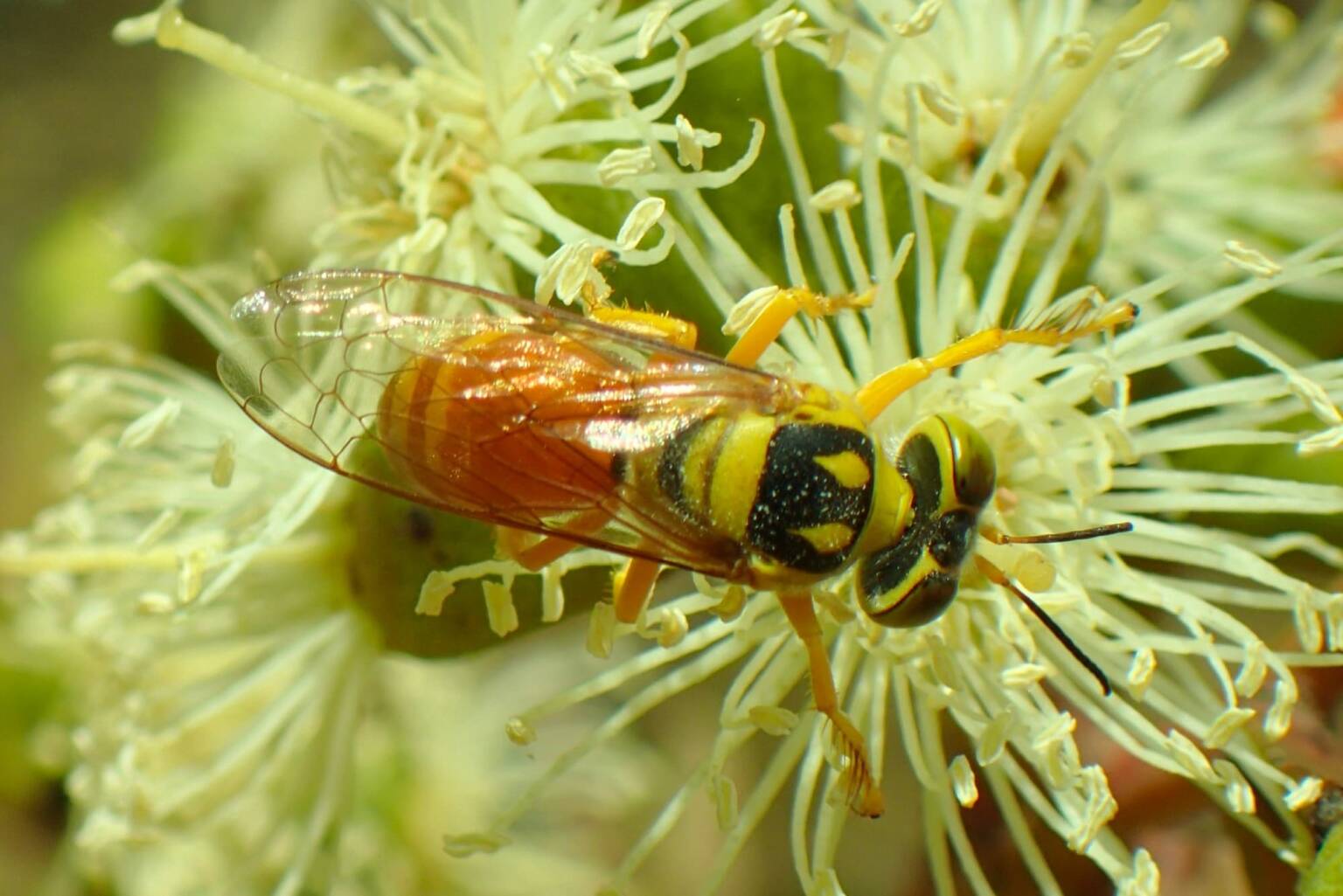Author Gary Taylor ◦ Velvet ants, one of my all time favourite little critters. In the family Mutillidae they are related to the Thynnid wasps and are a wingless wasp (females only) but oh so much more capable. The females…
Author Gary Taylor ◦ This little cutie is Hylaeus (Prosopisteron) “mysterium puella”, one of my first “unknown” species and the girl that not only drew me into the world of the smaller and lesser known native bees, but also taught…
Author Gary Taylor ◦ So it turns out my new Bembix is likely an entirely new undiscovered species… Cool, but they were crap photos focus wise (my camera isn’t great with moving targets), so I went back out today to…
Author Gary Taylor ◦ Here’s a new one for me, pardon the crap pics but they were all I could get… He/she (dunno but for the sake of the story I’ll say “she”) was flighty as… I’m out in the…
Author Annette Fraser-Dunn ◦ OMG OMG OMG OMG OMG! My new bee hotel has a TENANT! I am a tad excited. My neighbour over the back fence called out because she thought I was having a seizure. I yelled back,…
Author Koh Lin ◦ I woke up this morning from dreams of blowing bubbles… When we were younger, I am sure many of us would have enjoyed blowing those bubbles, seeing the bubbles being blown into the air, and running…
Author Phil Warburton ◦ We recently came across a group of unusual insects called sea skaters. We observed a mating aggregation of several dozens of these interesting and elusive members of the order of Hemiptera (the “true bugs”), in the…
Author Annette Fraser-Dunn ◦ Wow. It’s not all rainbows and unicorns and fluffy bunny slippers in Golden-browed Resin Bee society is it? At least not between two of my residents in Megachile Mansions. I was out there this morning and…
Author Phil Warburton ◦ As amateur naturalists, we are fortunate to live in the Eurobodalla, because the South Coast is home not only to a wide variety of plant, bird, mammal, reptile, and other species, but also to several rarely…
Author Gary Taylor ◦ And the flavour of the month goes to… Megachile aurifrons! Well done Fronsy! There’s been some great pics… I didn’t get any 😅 In the first pic she seems to have small eyes and a weirdly…










